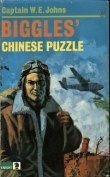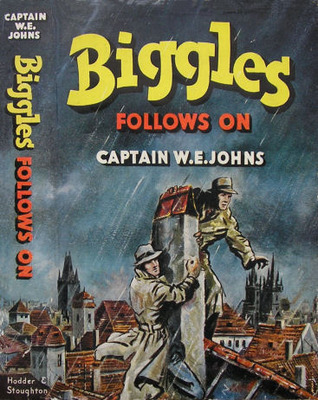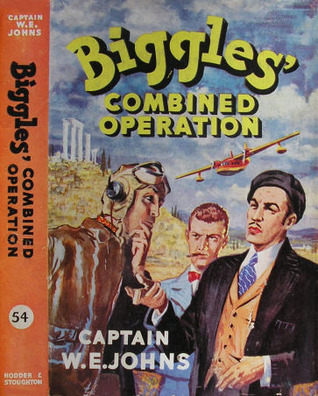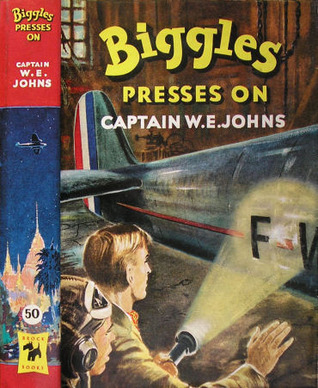
Part of Series
This contains eleven short stories. These are as follows:- THE CASE OF THE MAN ON A SPOT A Polish man with secret documents has had his wife kidnapped to make him hand them back. THE CASE OF THE SUBMERGED AIRCRAFT A Gipsy Moth found ditched in a Scottish Loch leads Biggles to a wife murderer. THE CASE OF THE SABOTAGED PARACHUTE A parachute with the cords cut leads Biggles to uncover more than just a corpse. (Dust cover). MISSION ORIENTAL Biggles and the team go to rescue the family of the Sultan of Kulang, in Malaya. THE CASE OF THE HAUNTED ISLAND A trip to a Polynesian Atoll leads to the discovery of a wrecked ship with a corpse inside it. THE CASE OF THE AMBITIOUS FISHMONGER A plane is used to send Salmon caught by poachers down to London. Biggles finds the culprits. THE CASE OF THE FATAL RUBY A ruby called the 'Blood of Asia' is to be transported by a pilot who is planning to steal it. FISHY BUSINESS A rogue fur trader has found a clever way of importing furs and avoiding paying duty on them. BIGGLES LAYS A GHOST A ghostly old wartime American Flying Fortress is being seen in the skies. Biggles hunts it down. MISCHIEF BY MOONLIGHT A professional fence is using an aeroplane to get the proceeds of burglaries out of the country. THE CASE OF THE STOLEN TRUCK A lorry, loaded with potatoes, is stolen and Biggles uses a plane to find the truck from the air.
Author
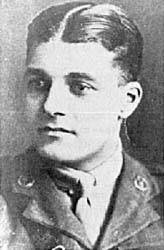
Invariably known as Captain W.E. Johns, William Earl Johns was born in Bengeo, Hertfordshire, England. He was the son of Richard Eastman Johns, a tailor, and Elizabeth Johns (née Earl), the daughter of a master butcher. He had a younger brother, Russell Ernest Johns, who was born on 24 October 1895. He went to Hertford Grammar School where he was no great scholar but he did develop into a crack shot with a rifle. This fired his early ambition to be a soldier. He also attended evening classes at the local art school. In the summer of 1907 he was apprenticed to a county municipal surveyor where he remained for four years and then in 1912 he became a sanitary inspector in Swaffham, Norfolk. Soon after taking up this appointment, his father died of tuberculosis at the age of 47. On 6 October 1914 he married Maude Penelope Hunt (1882–1961), the daughter of the Reverend John Hunt, the vicar at Little Dunham in Norfolk. The couple had one son, William Earl Carmichael Johns, who was born in March 1916. With war looming he joined the Territorial Army as a Private in the King's Own Royal Regiment (Norfolk Yeomanry), a cavalry regiment. In August 1914 his regiment was mobilised and was in training and on home defence duties until September 1915 when they received embarkation orders for duty overseas. He fought at Gallipoli and in the Suez Canal area and, after moving to the Machine gun Corps, he took part in the spring offensive in Salonika in April 1917. He contracted malaria and whilst in hospital he put in for a transfer to the Royal Flying Corps and on 26 September 1917, he was given a temporary commission as a Second Lieutenant and posted back to England to learn to fly, which he did at No. 1 School of Aeronautics at Reading, where he was taught by a Captain Ashton. He was posted to No. 25 Flying Training School at Thetford where he had a charmed existence, once writing off three planes in three days. He moved to Yorkshire and was then posted to France and while on a bombing raid to Mannheim his plane was shot down and he was wounded. Captured by the Germans, he later escaped before being reincarcerated where he remained until the war ended.
